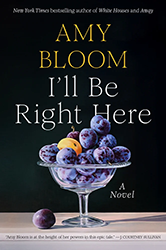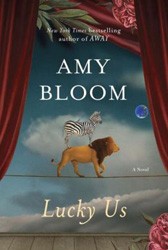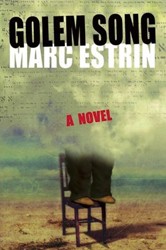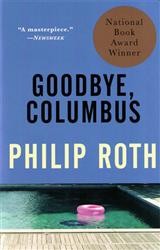Bloom’s fifth book explores the journey of a Russian refugee from the pograms of the 1920’s. Lillian Leyb finds herself away from anything familiar. She is homeless, penniless, and essentially friendless in the bustling streets of New York City during the height of the Yiddish Theater era. Luck places her in the beds of two powerful theater men, who support her financially, if not emotionally. Slowly, Bloom uncovers the scars of Lillian’s past life, in a manner that both speaks to the tenderness of these wounds and to the brutality that created them. Bloom’s depiction of this important period in the Jewish immigrant experience is alive with the sights, sounds, smells, and disorientation of New York’s Lower East Side.
A tip from a somewhat questionable relative starts Lillian on a journey that takes her away from the common experience of her immigrant kin. Determined to find her lost daughter, who may still be alive in Siberia, Lillian travels by train, by foot, by boat, by sheer will, west and northward across the United States, through the frozen territories of Canada, and into Alaska. Her trek is one of pain and of strength.
Much of the beauty in Bloom’s work comes from the character portrayals of the people who keep Lillian alive as she travels. Just as Lillian has been horrifically damaged by the events of her life, all those she meets have suffered as well. These characters emerge from the most diverse circumstances: a black prostitute and her brother the pimp; a tiny Chinese woman in prison for pick pocketing; a kindly widowed sheriff; a murderer who has left society to live alone in a cabin in the tundra.
In the end, it is love that takes center stage in Bloom’s dark, painful, and artful book. Love never completely obliterates Lillian’s suffering, but at times it shadows it. It is love that acts as a salve, if not healing scars, at least making them bearable. And it is this part of Lillian’s journey that the reader shares most intimately.
Juli Berwald Ph.D. is a science writer living in Austin, Texas and the author of Spineless: the Science of Jellyfish and the Art of Growing a Backbone. Her book on the future of coral will be published in 2021.
Discussion Questions
Courtesy of Random House
1. Dreams are a recurring theme in the novel. What are Lillian’s dreams, both literal and metaphorical? How do these illustrate or inform the larger subject of the American dream?
2. Much of the novel centers around self-invention and ‑reinvention. Can you identify some characters who reinvent themselves over the course of the novel? Which characters are successful? Which characters are unable to complete the process?
3. According to folktales, “when you save the golden fish, the turbaned djinn, the talking cat, he is yours forever” (p. 43). Which characters in the novel are saved, in one way or another? Which characters do the saving?
4. “Not that she is mine.That I am hers,”Lillian says,describing her love for Sophie (p. 79). In many ways, love is the primary engine of the plot. How does love define, inspire, and compel characters in the novel? What are some of the things characters do for love? Do you think that love is portrayed in the novel as a wholly positive force?
5. Contrast Yaakov’s story with Lillian’s. How do they each handle the loss of spouse and children, and how are they changed?
6. During Lillian’s journey, there are key points at which she is required to identify herself as either a native or a foreigner, insider or outsider. Can you point out some of these moments? At the end of the novel, how complete is Lillian’s assimilation?
7. Relationships among family members, particularly parents and children, play an important role in the novel. Compare and contrast the relationships between Lillian and Sophie, Reuben and Meyer, Chinky and the Changs. What is distinct about each family? Are there similarities?
8. How are sexuality and physical love portrayed in the novel? Consider Lillian’s relationship with the Bursteins, Chinky’s relationship with Mrs. Mortimer, and Gumdrop’s relationship with Snooky Salt, as well as Lillian’s relationship with John Bishop and Chinky’s relationship with Cleveland Munson.
9. What kind of person is Lillian? What do we learn, throughout the novel, about her passions and prejudices? Do you think Lillian is right when she says that she is lucky (p. 4)?
10. The metaphors and descriptive images in this novel are unique. Can you point out a few effective metaphors that helped the novel come alive for you as a reader?





